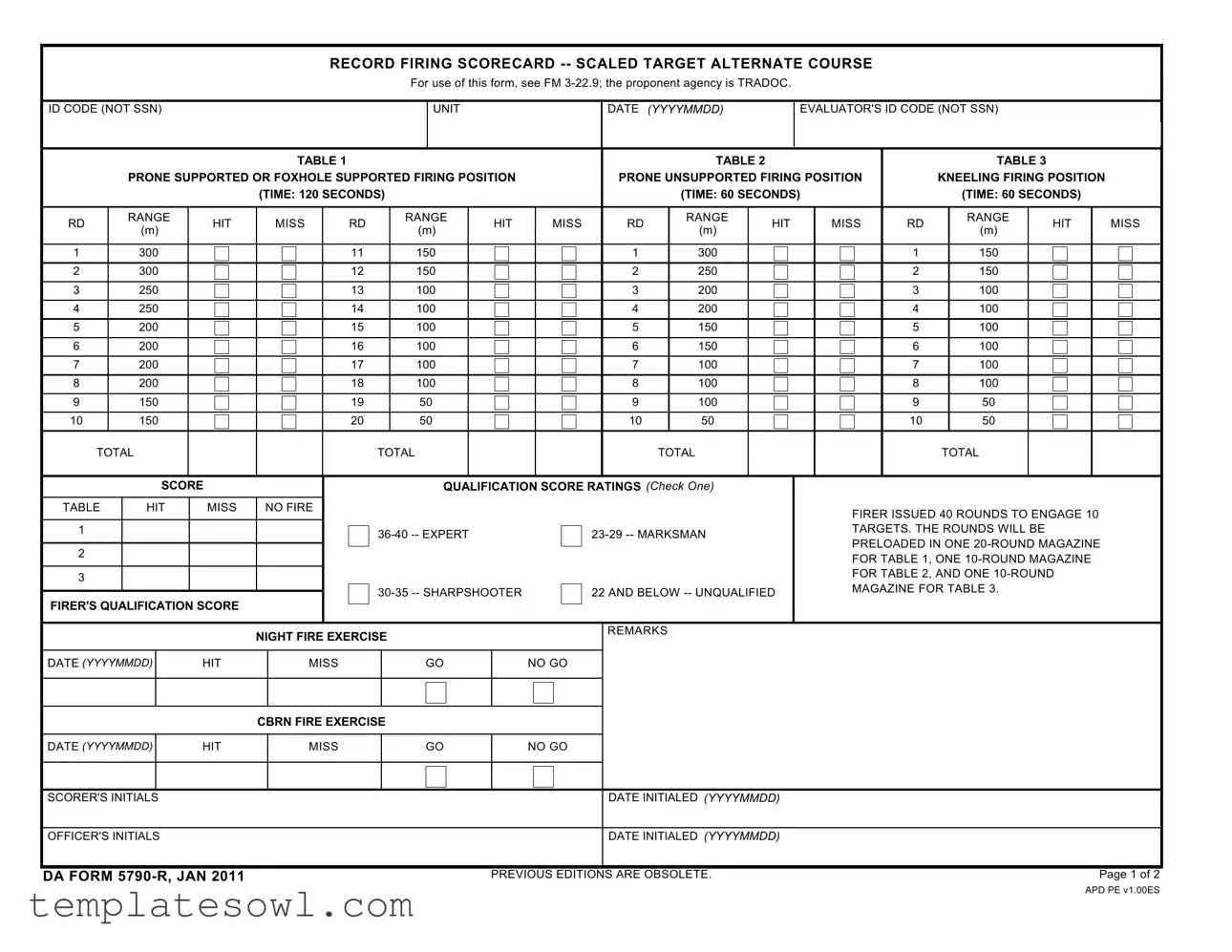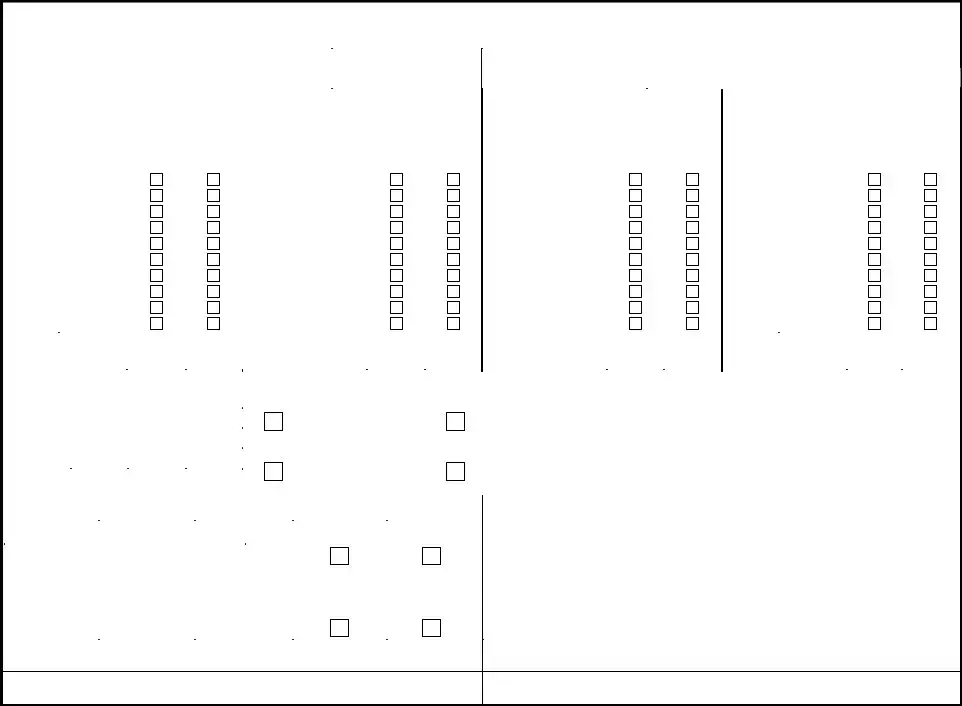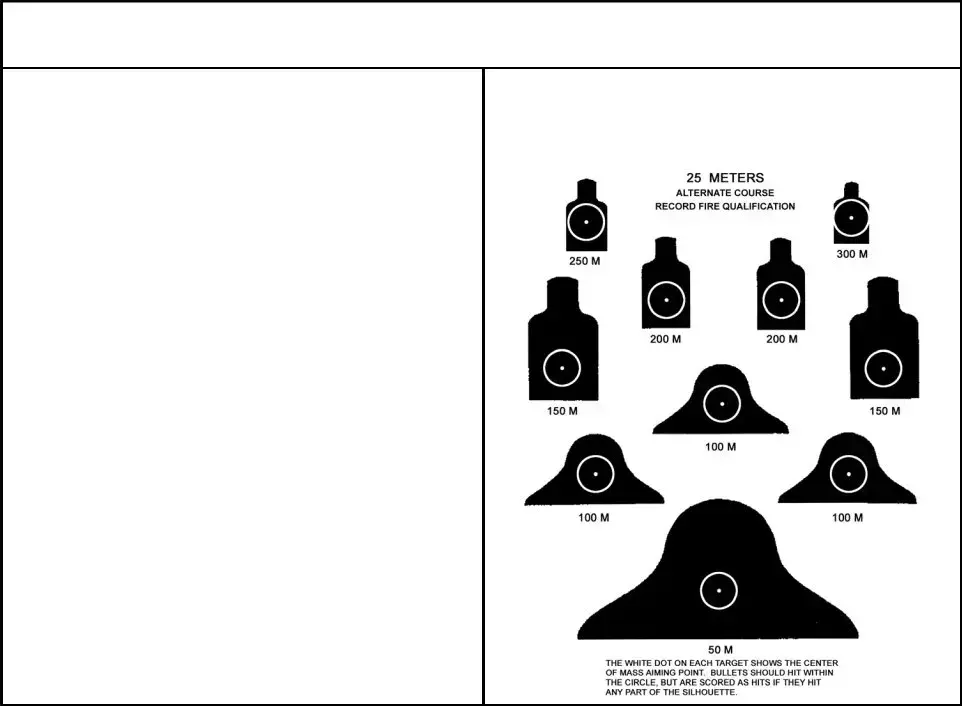What is the purpose of the DA 5790 R form?
The DA 5790 R form, also known as the Record Firing Scorecard, is used to document the results of firing exercises in the U.S. military. It tracks scores for various firing positions and assessments in alternate courses when standard ranges are unavailable. This ensures that soldiers maintain their marksmanship skills under different conditions.
Who is responsible for filling out the DA 5790 R form?
The evaluator, typically a qualified officer, is responsible for filling out the DA 5790 R form. It includes their ID code, the unit, and details about the scoring. Each firer’s performance is carefully recorded during the qualification process to maintain accuracy and accountability.
What happens if a soldier does not perform zeroing/grouping exercises on the day of record fire?
If zeroing/grouping exercises are not performed, the soldier must fire six rounds of training or sustainment ammunition for zero confirmation before the qualification course begins. This step is crucial to ensure accuracy during the qualification process.
Can soldiers use the DA 5790 R form for any firing range or only specific ones?
The DA 5790 R form is specifically designed for use with the 25-meter scaled silhouette target. It is only applicable when standard record fire and known distance ranges are not available. This makes it a valuable tool for alternative firing qualifications.
How is scoring conducted on the DA 5790 R form?
Scoring is done by awarding one hit for each round that strikes or touches the silhouette target. A maximum of 40 hits can be recorded, taking into account the varying hit potentials at different distances. For example, targets at 50 and 100 meters allow five hits while those at longer distances have fewer scoring hits.
What are the time limits for each firing table in the qualification course?
Each table in the course has specific time limits. For Table 1, which is prone supported or foxhole supported, the time limit is 120 seconds. Tables 2 and 3, which involve prone unsupported and kneeling positions, respectively, each have a time limit of 60 seconds. These limits ensure that firing is conducted swiftly and reflect real-world conditions.
Are there any specific guidelines for how soldiers should engage targets?
Yes, soldiers are advised to engage targets in a left-to-right order, starting from the closest and moving to the furthest. This methodical approach helps prevent confusion about which targets have been fired upon and ensures that all targets are engaged appropriately.
How does the DA 5790 R form facilitate training and qualification?
The DA 5790 R form records and measures a soldier's performance, allowing for constructive feedback and targeted training where necessary. By documenting scores, it helps in identifying areas for improvement, ensuring that soldiers maintain high levels of readiness and effectiveness.
What information is required on the form?
The form requires a variety of information, including the unit, evaluator's ID code, shooting scores for different tables, qualification scores, and any remarks regarding exercises conducted, such as night fire or CBRN training. This comprehensive data helps maintain an accurate record of a soldier's marksmanship qualifications.


